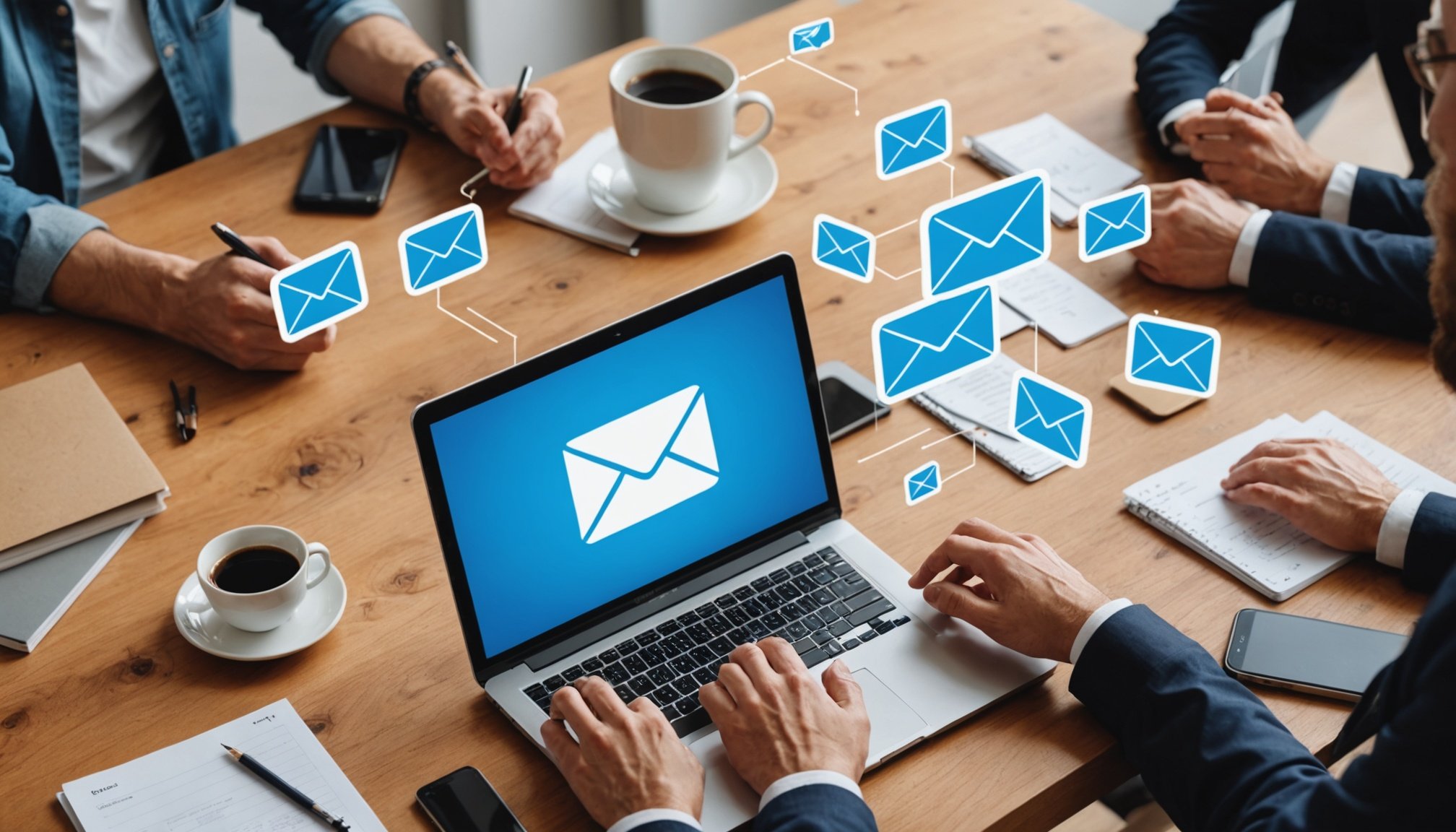Understanding B2B Email Marketing in the Tech Industry
Navigating the landscape of B2B email marketing is crucial for tech companies striving to forge effective communication with businesses. Within the tech industry, B2B email campaigns are pivotal in building relationships, driving leads, and nurturing potential customers. But why is B2B email marketing particularly significant for tech companies?
Tech companies can leverage B2B email marketing to share product updates, lead industry discussions, and provide solutions tailored to specific business needs. Successful B2B email campaigns in the tech sector often include personalised content, targeted messaging, and a clear call to action. This ensures the message resonates with its intended audience, prompting engagement and action.
In parallel : Top approaches for developing a winning remote work policy in the uk financial sector
However, tech companies in Norwich encounter unique challenges in B2B email marketing. With a competitive digital landscape, standing out in an overflowing inbox can be daunting. Furthermore, ensuring that email campaigns adhere to data protection regulations and are aligned with recipients’ preferences requires meticulous planning and execution.
For tech companies in Norwich, overcoming these challenges necessitates strategic planning, content precision, and staying informed about industry trends. By addressing these hurdles head-on, businesses can maximise the potential of their B2B email marketing initiatives, fostering meaningful connections and driving growth.
Also read : Effective tactics for seamless digital payment integration in bristol”s nonprofits
Audience Segmentation Strategies
To effectively implement audience segmentation, it’s crucial to first identify the key demographics and psychographics of the target audience. These include age, gender, income levels, preferences, and behavior patterns. Understanding these elements provides valuable insights into what motivates different groups of consumers and how best to tailor marketing strategies.
Gathering data to refine segmentation involves multiple data collection methods. Surveys, online analytics, social media monitoring, and customer feedback are pivotal tools in this process. Tech firms often leverage advanced analytics platforms to gain precise insights into their audience’s habits and preferences. These platforms offer real-time data, making it easier to adjust strategies dynamically.
When it comes to managing and organising audience segments, a variety of tools and software can be employed. Customer Relationship Management (CRM) systems are popular choices, offering robust features to track interaction and engagement metrics. Moreover, tech firms are using AI-powered tools that predict customer needs based on historical data, allowing for more tailored targeting strategies.
In summary, audience segmentation involves understanding demographics and psychographics, collecting relevant data, and utilising sophisticated tools for management and application. This informed approach enables tech firms to create tailored marketing efforts that resonate with specific consumer segments, ultimately driving brand impact and sales growth.
Campaign Planning Essentials
In the realm of email marketing strategy, understanding the fundamentals of campaign planning is crucial for tech companies aiming for success. So, how does one set up a strategic email marketing campaign effectively? Begin by identifying the primary objectives. Aligning the campaign with overarching business goals ensures coherence and consistency in messaging. This means that each step from content creation to targeting should reflect these goals.
Consider tech companies in Norwich, for example. They’ve utilized frameworks like SMART (Specific, Measurable, Achievable, Relevant, Time-bound) to streamline their campaign planning. These frameworks are not just jargon; they translate high-level business objectives into actionable steps.
Next, focus on understanding your audience. Different segments may require varied messaging or even different products. Thus, segmenting your email list based on customer preferences and behaviours can enhance the effectiveness of your campaign.
Timing is another crucial element. Sending the right message at the right time can improve engagement rates significantly. Ensuring that your campaigns are scheduled according to customer behaviours and time zones plays a pivotal role in maximizing open rates.
Incorporating these steps into your email marketing strategy ensures that tech companies can achieve better results and maintain a strong connection with their audience.
Crafting Effective Email Copy
Crafting compelling email copywriting is essential for capturing the interest of your target audience, especially in the tech space. The key lies in persuasive writing that resonates with the recipient’s needs. For a tech audience, it is crucial to focus on clarity and precision.
Elements of Persuasive Email Copy
To write effective email copy, consider the following elements:
- Engaging subject lines that inspire curiosity or address a direct benefit can significantly increase open rates. Aim to keep subject lines crisp and informative.
- Personalisation techniques are vital. Including the recipient’s name or tailoring messages based on past behaviour can make your emails more relevant, thus capturing attention.
- Crafting a sense of urgency—through limited-time offers or exclusive content—can drive the desired action, encouraging quicker recipient responses.
Tailoring Messages for Different Segments
Understanding distinct segments within your audience allows you to tailor your email copy. Tech audiences may appreciate detailed technical insights or the latest industry trends, which should be integrated into your emails.
Importance of A/B Testing
A/B testing is crucial for understanding what resonates best with your audience. By experimenting with different email copywriting strategies, you can enhance persuasive writing effectiveness. Performance insights about open rates and click-throughs guide adjustments to refine email strategies, ensuring alignment with your tech audience’s preferences.
Email Design Best Practices
Creating engaging and functional email designs is crucial for tech marketing. Let’s explore some essential practices that can enhance both the user experience and the effectiveness of your campaigns.
Understanding principles of effective email design begins with focusing on clarity and simplicity. Tech marketers should ensure that emails are easy to read and navigate. Use a well-structured layout, including clear headings and concise paragraphs, to guide recipients through the content smoothly. Implementing a coherent design language helps maintain brand consistency and improves the professional appearance of emails.
Responsive design is paramount, especially for mobile users who represent a large portion of the audience. Emails should adapt seamlessly to various screen sizes without compromising content or visuals. Utilizing flexible layouts and ensuring concise text can prevent clutter and maintain engagement on mobile devices. Test designs on multiple devices to ensure a consistent user experience.
To craft visually appealing and functional templates, leverage powerful design tools. Platforms like Mailchimp and Canva offer pre-made templates that can be customized to meet specific needs. These tools often incorporate drag-and-drop features, enabling efficient creation without extensive coding skills.
By adhering to these best practices, tech marketing strategies can optimize communication with recipients, fostering more impactful interactions and meaningful connections.
Compliance and Best Practices
Navigating the landscape of email compliance is crucial for tech companies striving to engage effectively with customers while adhering to regulations like the GDPR. The General Data Protection Regulation, or GDPR, emphasizes the protection of personal data, establishing guidelines for how companies collect, store, and use email addresses and other personal information. Non-compliance can lead to hefty fines and damage to a company’s reputation.
To maintain compliance, tech companies should focus on best practices. This includes ensuring all communications are transparent, providing clear options for individuals to opt-out, and implementing robust data protection measures. It’s vital to document consent and always have a lawful basis for processing personal data, especially in B2B contexts where email marketing campaigns are common.
Consent plays a pivotal role in B2B email marketing. Companies must obtain explicit consent from individuals before sending promotional emails. This consent should be informed, specific, and unambiguous. Including clear information on how data will be used and offering a simple opt-out mechanism respect individuals’ rights under GDPR and supports ethical marketing practices.
By adhering to these practices, tech companies can not only comply with regulations but also foster trust with their audience, which ultimately enhances customer relationships and business reputation.
Performance Metrics and Analytics
Understanding and monitoring performance metrics is vital for the success of B2B email campaigns. The most significant Key Performance Indicators (KPIs) to track include open rates, click-through rates (CTR), conversion rates, and bounce rates. These metrics offer insights into how well your emails are engaging recipients and driving them towards your end goals.
For superior email analytics, employing the right tools and platforms is essential. Google Analytics, Mailchimp, and HubSpot are popular choices that provide comprehensive data on your campaigns. These tools help you see which emails are opened, clicked, and lead to conversions, enabling you to measure the effectiveness of your campaigns.
Analyzing campaign performance is an ongoing process, which requires a mix of qualitative and quantitative methods. By evaluating the data meticulously, you can draw actionable insights to refine future email marketing strategies. Adjusting subject lines, email content, and send times based on analytics can significantly improve your engagement rates.
One effective strategy involves A/B testing, which allows you to compare different versions of your emails to determine which performs better. With this iterative approach to tech campaigns, you’ll continuously optimize your tactics and stay in tune with your audience’s preferences, enhancing the overall success of your email marketing initiatives.
Tools and Resources for Success
In the rapidly evolving landscape of digital communication, finding the right email marketing tools can significantly enhance a tech company’s outreach efforts. The right platforms offer comprehensive solutions that streamline processes from templates to analytics.
Consider starting with renowned tech solutions like Mailchimp, HubSpot, and SendinBlue. These platforms are designed to cater to varied needs, providing features like automation, A/B testing, and detailed performance tracking. They also offer templates that simplify campaign management, allowing marketers to focus on crafting compelling content.
For those operating in Norwich or similar locales, local case studies highlight how tech companies have thrived using these resources. One Norwich-based firm witnessed a 30% increase in engagement by adopting personalized email templates and integrating CRM systems. This success underscores the importance of tailoring messages to audience demographics and behavior.
Adopting these tools not only diminishes manual workload but also provides insights into consumer preferences through robust data analytics. As businesses strive for precision, these email marketing tools prove indispensable in developing targeted marketing strategies, optimizing resources, and enhancing customer interaction. Success in email marketing often hinges on tools that enable personalization and detailed planning—critical factors for influencing customer decisions.
Local Insights from Norwich’s Tech Scene
Understanding how the Norwich tech community thrives can offer valuable insights for tech enthusiasts and entrepreneurs alike.
Successful Campaign Examples
Norwich boasts several successful email marketing campaigns that have gained attention. For instance, a local tech firm launched a personalized email strategy, boosting engagement by 40%. By segmenting their audience and tailoring content, they improved conversion rates, showcasing the potential of targeted communication. Such case studies underline the importance of understanding your audience in the Norwich tech community.
Interviews with Local Experts
Gaining insights from experienced professionals in the Norwich tech community can be invaluable. Interviews with seasoned marketers reveal that agility and adaptability are crucial. One expert emphasized, “Adapting quickly to market changes can set your email marketing apart.” This reflects the dynamic nature of email marketing and the need for ongoing learning and experimentation.
Lessons Learned
Key takeaways from Norwich’s tech scene include the emphasis on local case studies and the power of community networking. By collaborating and sharing insights, tech firms can enhance their strategies. Lessons from Norwich suggest prioritizing authenticity and clear communication in email campaigns, vital for success. Additionally, continually analysing and adjusting campaigns based on data ensures sustained growth within the community.











